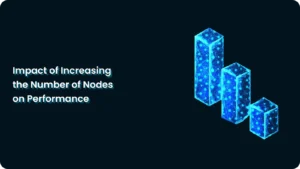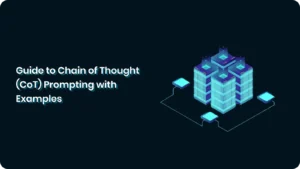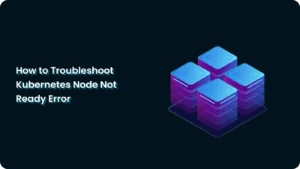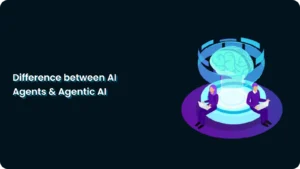AI in SRE: Hype vs Reality – What Enterprise Leaders Think (Round table Overview)
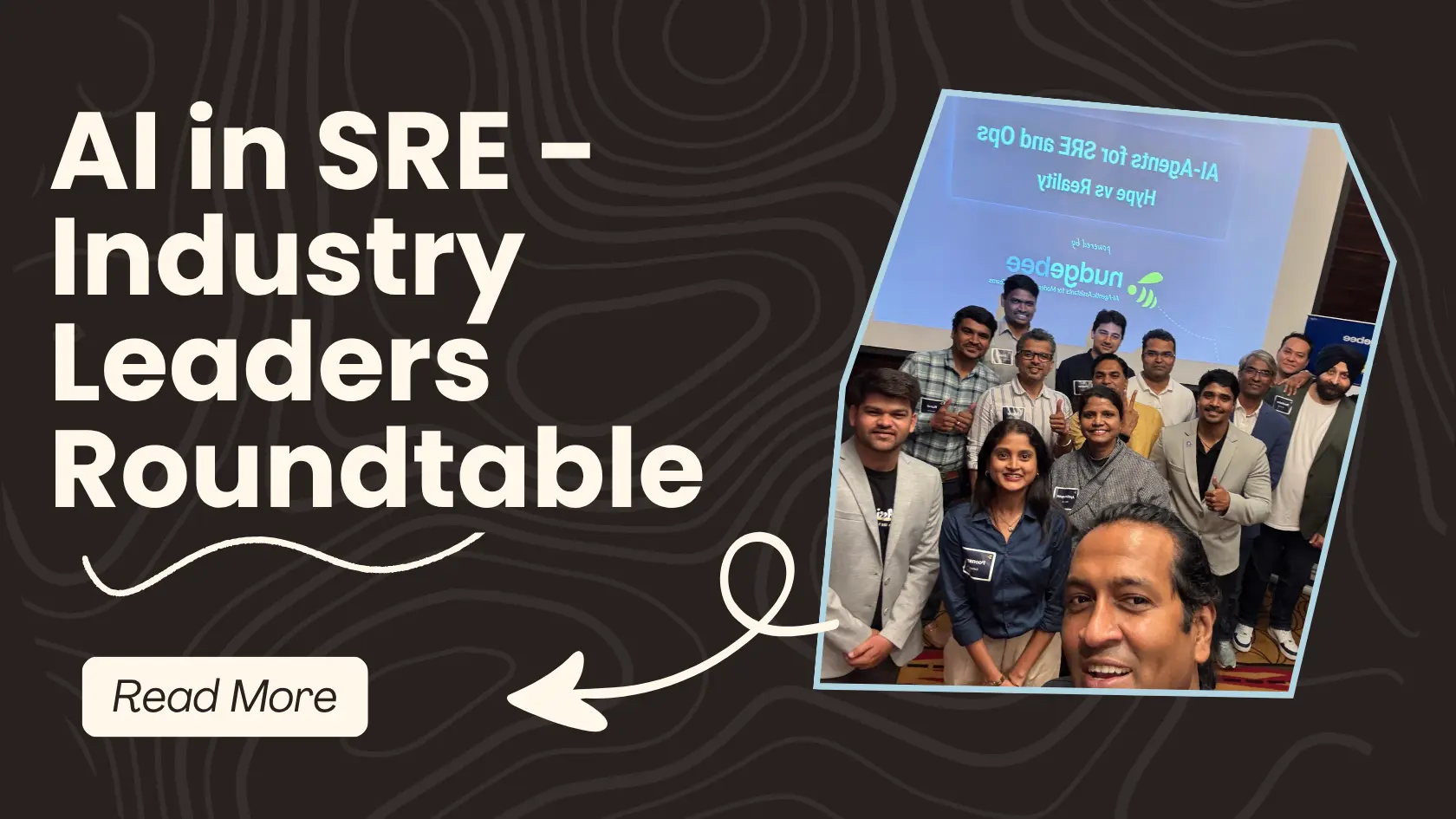
AI in Site Reliability Engineering (SRE) is one of the hottest topics in 2025. Every tool claims to “add AI,” but CIOs and CTOs are asking a tougher question: what’s real versus just marketing?
Introduction: Why AI in SRE Is Now a Boardroom Topic
For enterprises, downtime isn’t just technical, it means lost revenue, broken SLAs, and damaged customer trust. At the same time, cloud costs are rising, complexity is growing, and SRE teams are burning out.
This is why AI in Site Reliability Engineering (SRE) has moved from hype on vendor slides to a strategic boardroom discussion. CIOs and CTOs want to know:
- Can AI reduce the burden on small, overstretched SRE teams?
- Will it really cut costs, or just add another expensive tool?
- How do we avoid “black box” automation risks?
At our recent closed-door roundtable in Pune, 15+ enterprise leaders came together to debate “AI in SRE – Hype vs Reality.” Their skepticism was real, but so was the opportunity. This blog distills the key questions they asked, and how NudgeBee addresses them.
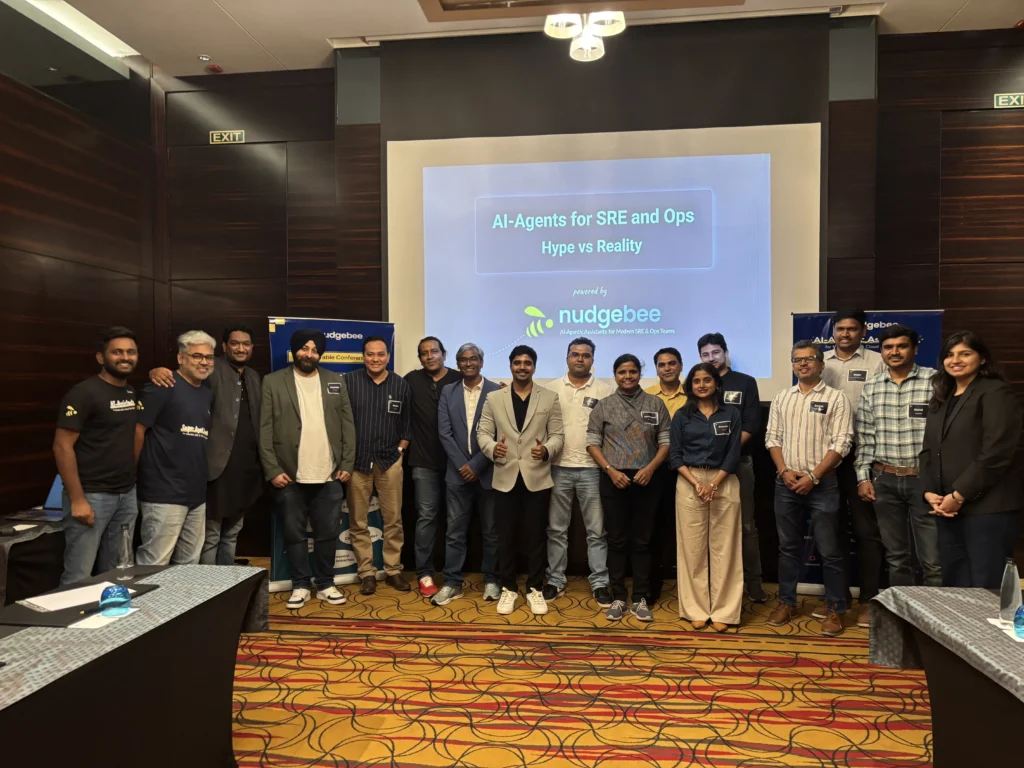
Is AI in SRE limited to just 30–40% productivity gains?
AI in SRE is not capped at 30–40% productivity; when integrated across troubleshooting, automation, and cost optimization, gains can scale 2–3x.
The skepticism: Many executives worry AI provides only modest boosts—30–40% at best. If so, is it worth the investment?
The reality: AI isn’t just about incremental efficiency. When agentic workflows cover troubleshooting, cost ops, and automation together, the compounding effect is transformative.
NudgeBee’s, enterprises customers see:
- 35% faster incident resolution (cutting MTTR from hours to minutes).
- 30%+ routine tasks automated monthly, freeing engineers from toil.
- L3-level incidents resolved by junior staff, with AI-guided troubleshooting.
Productivity isn’t capped, it compounds when AI agents collaborate across workflows.
How do we balance noise, accuracy, and cost?
AI agents reduce noise and cost by contextualizing alerts, enforcing guardrails, and optimizing clusters in real time.
The skepticism: AI is noisy, inaccurate in complex environments, and expensive to run. Enterprises don’t need more alerts—they need fewer, smarter ones.
The reality: NudgeBee’s semantic knowledge graph ensures context-rich, accurate actions. Guardrails enforce human approvals where needed, while continuous optimization reduces waste.
Outcomes include:
- Fewer false positives through context-driven detection.
- Cost savings of 30–60% on cloud resources.
- Predictable ROI with proactive scaling and anomaly detection.
Noise, accuracy, and cost aren’t trade-offs—they’re balanced by design.
Observability is already expensive. Does AI add or save?
AI turns observability from a cost center into a value driver by converting metrics and logs into actionable optimization workflows.
The skepticism: Observability is often the #2 cost driver after compute. Leaders fear AI only adds more layers of expense.
The reality: Observability without action is an expensive dashboard. AI doesn’t duplicate—it integrates with tools like Prometheus, Loki, Datadog, and Jaeger, and drives action.
- Automatically right-sizes workloads.
- Detects anomalies and suggests one-click fixes.
- Identifies unused services for safe decommissioning.
One enterprise reduced cloud costs by 40% in five weeks without changing observability vendors, just by activating workflows.
Can AI agents replace human expertise?
AI doesn’t replace SREs, it augments them by handling grunt work while leaving judgment and accountability with humans.
The skepticism: Incidents require human prioritization and accountability. AI alone is risky.
The reality: NudgeBee is built for augmented operations. AI does the repetitive work; humans make the final calls.
- Engineers see a diff before apply on all fixes.
- Ticketing, triage, and routine detection are automated.
- Guardrails ensure compliance and security boundaries.
One roundtable participant put it best: “AI can’t replace our SREs, but it’s the only way they can keep pace with scale.”
Is there real ROI from AI in SRE?
ROI is proven, enterprises achieve faster MTTR, lower cloud costs, and fewer escalations by deploying agentic workflows.
The skepticism: ROI is often promised, rarely proven.
The reality: With targeted adoption, the results are tangible:
- 35% faster MTTR, improving uptime and SLAs.
- 30–50% lower cloud spend via continuous optimization.
- 50% fewer L3 escalations, freeing senior engineers.
One enterprise reduced Kubernetes-related developer tickets by 70%, while another saved seven figures annually in cloud costs.
The AI-Agentic Ops Triangle: A Framework for Leaders
Enterprise leaders can frame AI adoption around three pillars, the AI-Agentic Ops Triangle:
- Productivity: Automating toil and enabling less experienced engineers to do more.
- Accuracy: Reducing false positives, ensuring reliable fixes.
- Cost: Optimizing infrastructure spend, not inflating it.
When AI agents are deployed with all three in balance, they deliver sustainable enterprise ROI, not just hype.
Where AI in SRE Is Headed Next
Over the next 12–18 months, enterprise adoption of AI in SRE will shift from pilots to scale. Key trends include:
- Expanding agent libraries: Security, compliance, and upgrade agents beyond troubleshooting.
- Self-healing clusters: From guided fixes to autonomous remediation with approvals.
- Sovereign AI models: On-premise, self-hosted AI for regulated industries.
- Compliance automation: Proactive CVE scanning and CIS compliance out of the box.
The future isn’t “AI replacing SREs.” It’s AI enabling smaller teams to manage larger, more complex systems sustainably.
Ready to see AI agents in action? [Book a Demo with NudgeBee]
FAQs on AI in SRE & DevOps
AI agents automate troubleshooting, optimize costs, and reduce toil, allowing engineers to focus on higher-value work.
By analyzing logs, metrics, and traces in real time, AI agents identify root causes and suggest fixes instantly, reducing MTTR by up to 35%.
Yes. Through workload rightsizing and anomaly detection, enterprises typically save 30–50% on cloud spend.
They integrate seamlessly, turning observability signals into optimization workflows—no need to rip and replace.
Yes. NudgeBee supports on-premise deployments, with no data leaving the environment, plus RBAC, MFA, and compliance frameworks.
Absolutely. AI levels the field by allowing small teams to manage enterprise-scale complexity with fewer escalations.

